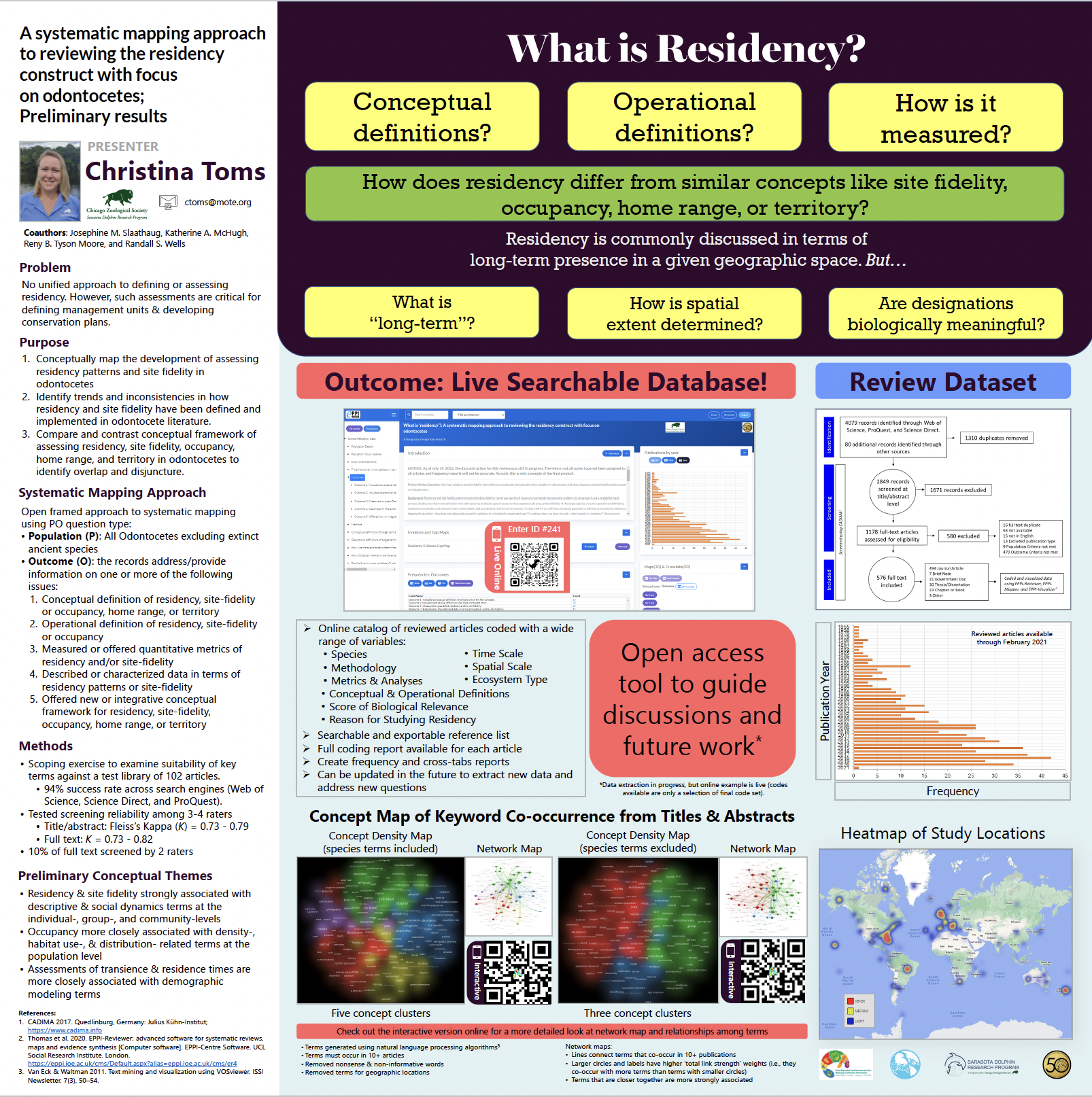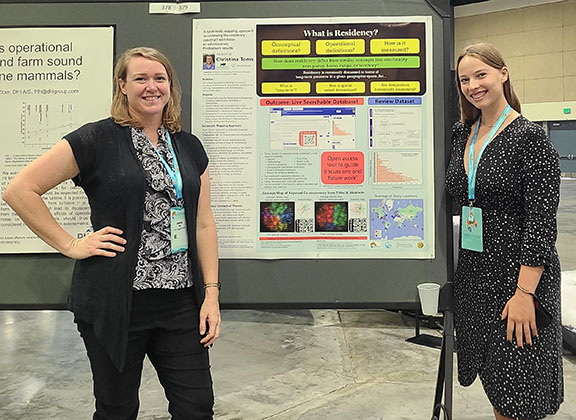What is animal residency and how do we define and measure it? In marine mammal research, residency is often used to describe the place that animals (or groups of animals) occupy in a given geographic space over a long period of time. In fact, the SDRP made the discovery that bottlenose dolphins can form multi-decadal, multi-generation, year-round communities, despite their capacity for extensive ranging. Our Sarasota resident dolphin community is characterized by high site-fidelity, small overlapping home ranges, and by animals that tend to interact with each other more frequently than with dolphins in adjacent communities.
However, without a long-term dataset like the SDRP’s, how do we characterize individuals or groups in this way? How much time do we need to make such assessments? How do researchers know which geographic range to survey without knowing the movement patterns of the animals? What metrics should we use to assess residency?
It’s complicated, of course! But understanding community structure and how long animals use specific areas are key parts of population management and mitigating negative impacts on animals.
SDRP’s Dr. Christina Toms is conducting a conceptual review on odontocetes (toothed whales) to
- Evaluate how others in the marine mammal community have tackled these questions over time and;
- Gather that information into one database that will be freely available online.
Christina and previous SDRP intern Josie Slaathaug presented preliminary results during the 24th Biennial Conference on the Biology of Marine Mammals in August 2022. While this is a work in progress, you can check out the online database for an idea of what’s coming here.






